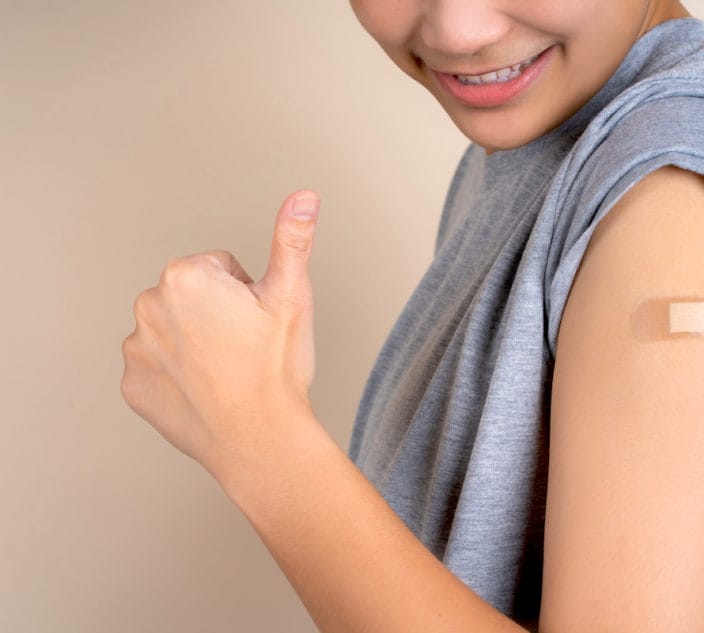Two food allergy emergencies occurred in August 2014 aboard two long-distance flights, reminding all of us in the allergy community of the importance of being prepared for anaphylaxis.
The first incident occurred when a 4-year-old Irish girl began to have a severe reaction during a United Airlines flight from Dublin, Ireland to Newark, New Jersey. The pilot decided to turn the plane back to Dublin so she could get emergency treatment. (Full story of incident here.)
The girl had no history of food allergies, and began reacting about two hours into the flight. Her mother said she had eaten a cashew. A fellow passenger told a media outlet that the girl’s face was highly swollen and she was in distress. The girl was given two epinephrine injections in flight and, once the plane landed, she was taken to hospital and fully recovered.
A second case of anaphylaxis in the skies occurred in mid-August on a Ryanair flight from the Canary Islands to London. A 4-year-old girl with a known nut allergy was on board, and the crew made an announcement to passengers to refrain from eating nuts. However, about 20 minutes into the flight, the girl began scratching at her cheeks, then her tongue swelled, her lips began to blister and she began to have breathing distress.
The girl’s mother told media that her daughter briefly lost consciousness on the flight. After an announcement requesting medical personnel, an ambulance driver on board offered to inject the girl with her auto-injector, after which she regained consciousness and her condition improved. It was the first time the girl had required an epinephrine shot.
It was reported that a man had been sitting four rows in front of the family eating nuts, despite the crew’s PA requests that passengers refrain from eating nuts because of an allergic passenger. It has not been confirmed that this was the cause of the reaction, but Ryanair banned the man from its flights for two years.
These incidents are alarming for the food allergy community. Allergic Living asked Dr. Matthew Greenhawt, an expert on airlines and allergies, for his views on these cases and flying with allergies in general.
With a food allergy to peanut or tree nuts, is it likely for an allergic reaction to occur from one person opening a bag of nuts on a plane, four rows ahead?
Dr. Matthew Greenhawt: The short answer is that it is highly unlikely for a passenger to inhale nut protein from someone consuming nuts a few rows in front of him/her. There is no evidence that has been able to show that such dust circulates. Five studies in the past 10 years have addressed this concept and found the following results:
a) Close range (12 inches) exposure to inhaling peanut butter resulted in no reaction in severely reactive peanut allergic subjects.
b) Peanut dust could not be detected in the air from stomping on peanuts on the floor or from opening an airline-style bag. If a scientific measuring tool is placed an inch or two above peanuts being de-shelled, dust can be briefly detected in low quantities (300 micrograms), but only while the item is being de-shelled. As soon as the shelling stops, dust is no longer detectable. This implies that the dust settles, rather than circulates.
c) Peanut butter and peanut dust are both easily cleaned from hands and surfaces using a variety of commercially available cleaners.
Smelling pre-roasted nuts being re-warmed on board is similar to the smell of peanut butter (which was proven to not cause reactions). This may not make concerned passengers more comfortable, but most experts agree that there are no active proteins involved in breathing in the aroma of re-heated, pre-roasted nuts.
Apart from reactions where one eats a contaminated food, airline reactions most likely occur from allergen that may accumulate on surfaces. This we know happens in many different environments. On the plane, without being aware, one could potentially touch a surface that hadn’t been wiped down first, and theoretically ingest some level of allergen.
In fact, from my own studies and studies I’ve reviewed, I’m suspicious that this surface contact may be more of a problem than the air being inhaled. The good news is that pre-cleaning your personal seating area surfaces can reduce the risk of an unintended, unnoticed ingestion.
Is re-circulated air on an airplane likely to contain enough airborne allergens to cause reactions throughout the plane?
Dr. Greenhawt: It is very unlikely that someone would inhale a dose of an airborne allergen. Airflow dynamics for commercial jets actually mandate that there is frequent air-exchange and HEPA filtration of that air. Depending on the type of aircraft, its age, and its make, there are varying levels of air exchange between the cabin and the sky, meaning that there is minimal “re-circulation” of the same air during a flight. A nice explanation for this can be found here.
Next page: More Q&A with Dr. Greenhawt on airline reactions.





